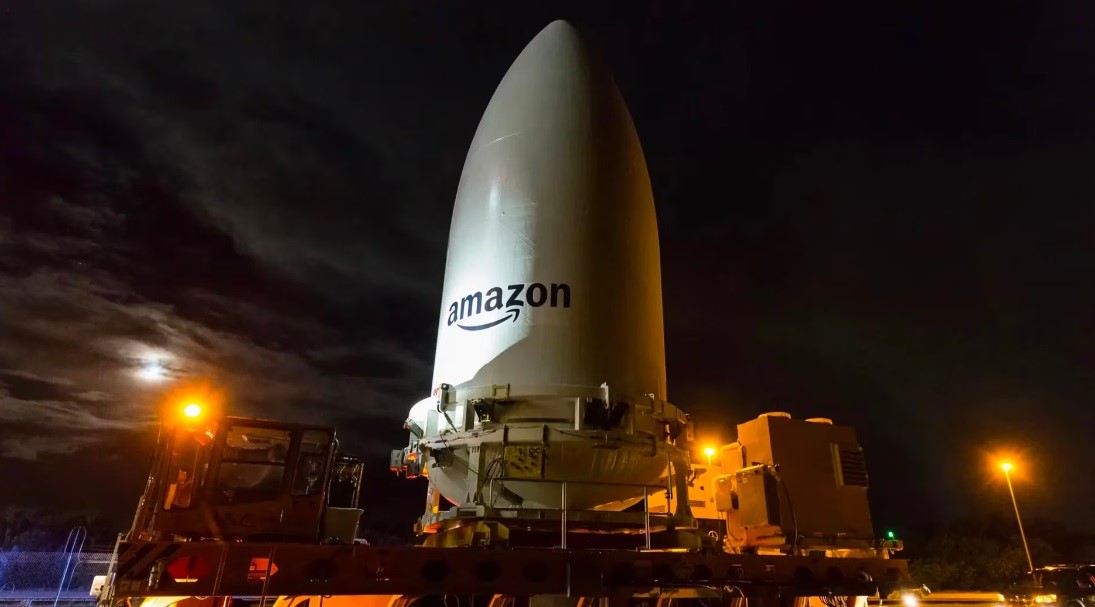

Amazon's $10-billion-plus Project Kuiper had seen the worst of its days when, on October 6, it was rumoured that after the successful launch of the two satellites, the cloud-computing firm had lost contact with one of them. This low-Earth orbit satellite installation would have created a direct turf with Jeff Bezos's business foil, Elon Musk, who has the Starlink constellation of internet satellites under SpaceX.

The maiden journey and looming complications
During a subsequent handoff to another station, only one vehicle checked in, which appeared to have been a major setback for the retail and cloud-computing giant. However, after piecing together the scraps of data they'd collected Amazon's satellite operations team discovered that the missing satellite was fine, and the information streaming in could only have come from a pair of healthy spacecraft.
Present company attitude and future plans
Amazon officials are very optimistic about this latest development as the e-commerce specialist now wishes to extend its operations to include Project Kuiper, which will be fundamental in bringing connectivity to barren or non-penetrable areas. This is not just a business plan for Jeff Bezos, as he wishes to use Amazon's technological prowess for philanthropic activities like spreading education and uplifting communities.
By the beginning of 2025, the company has plotted to commercialise rooftop antennas for residential internet users, provide wireless connectivity to companies for linking remote cell towers to their network and sell cloud-computing and data-recovering services to global businesses.
Chronology of Project Kuiper
Amazon explored several options to provide internet access to millions of people and eventually decided to deliver the internet from satellites. This idea was not new, as a company called Teledesic had attempted to launch a constellation of satellites in the 1990s, but it failed after the dot-com bust. However, Elon Musk took up the idea and built satellites in-house through his rocket company, Space Exploration Technologies Corp (SpaceX).
The brains behind the show
Rajeev Badyal, the VP of Technology, Project Kuiper, had once headed Microsoft's doomed project Zune music player and was later hired by Elon Musk in 2014 for SpaceX's Starlink endeavour. It is not surprising that the same brain would be required to lead Amazon to its ultimate glory. Jeff Bezos was smart enough to call Badyal by 2018.
Rajeev exemplified: "Building two satellites is very hard. Building 3,000-plus is exponentially harder."
Amazon's Project Kuiper is a pricey venture that has survived the company's cost-cutting spree. The project aims to build a broadband system that has the capacity and internet speeds to compete with terrestrial telecom companies. Amazon has already tested its maiden satellites through a battery of tests, including a video call and a system of lasers to extend the reach of each satellite. To meet the terms of its license with regulators, Amazon has to build and find a ride to space for the equivalent of two satellites a day through July 2026, which is a challenging task. Project Kuiper is an enormous undertaking in an arena that has had more bankruptcies than successful businesses.
The projected discography of Amazon's very first low-Earth orbit satellites
The satellites will be launched inside the nose of a rocket and will rely on an automated system to reorient them towards Earth. The solar panels will deploy automatically using actuators that heat a plug of wax. When a customer loads a website, the home terminal beams a signal up to a circular array of thousands of antenna modules. The craft travels at 17,000 miles per hour, and each satellite has its own propulsion system.
Everyday activities at Project Kuiper's headquarters
The Indian-origin innovator Rajeev Badyal says, "You have to innovate at a much faster pace" than fellow contemporaries in the space manufacturing industry. His chamber at the Project Kuiper headquarters in Redmond has been conditioned to look over the R&D lab where engineers design and create bespoke aluminium components, assemble circuit boards and test antennas for space applications.
Amazon executives claim that project Kuiper is on schedule, but the company was supposed to receive all its specialised aluminium parts or components, chips and auxiliary building materials almost a year ago. Anyhow, the Amazon satellites are now in orbit and to maintain a unique pro forma, the aluminium body parts of each spacecraft will be etched with the names of the brilliant minds working on the project since August 2022.
If you wish to learn more about the use of aluminium in the transportation sector, please go through AL Circle's report with a comprehensive overview, Future of Aluminium in the Transportation Sector.



Responses






